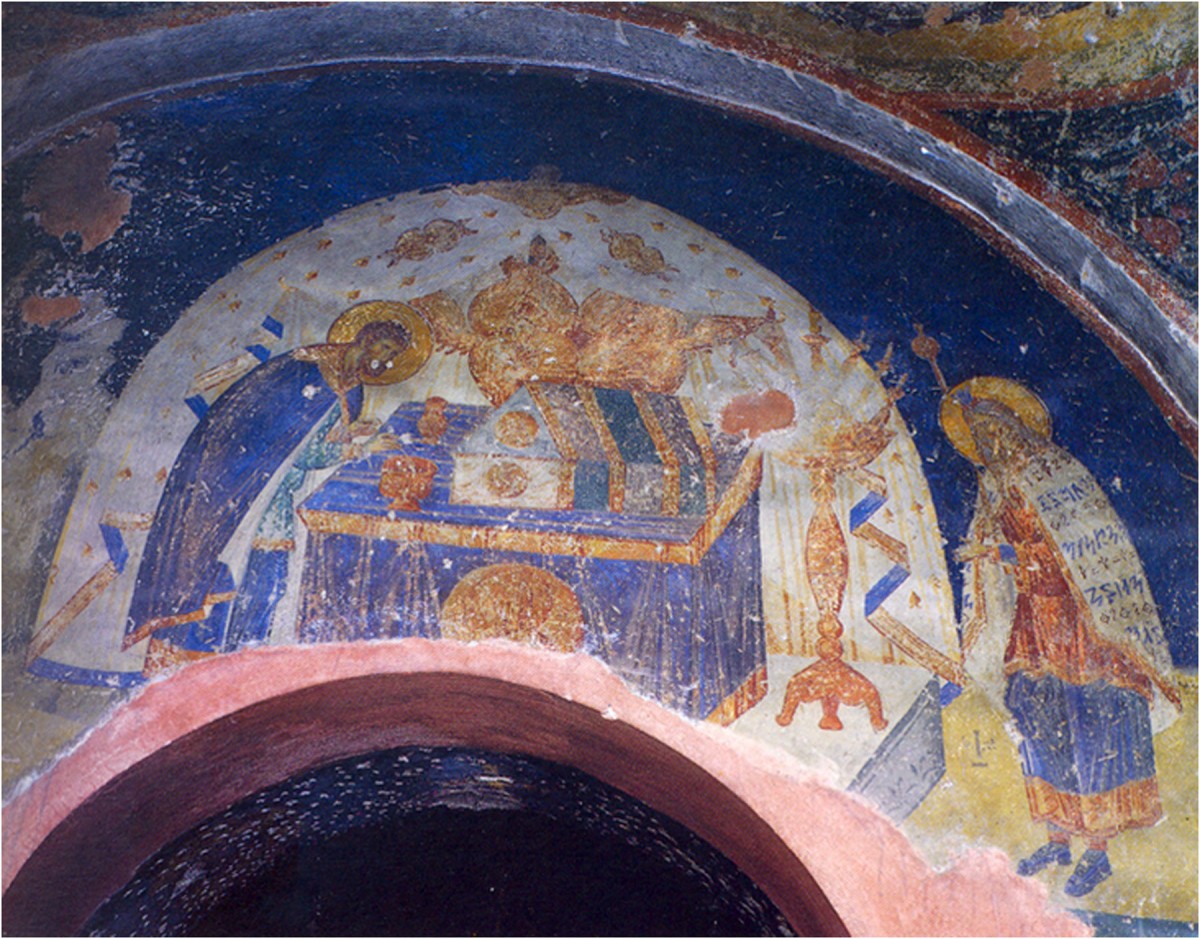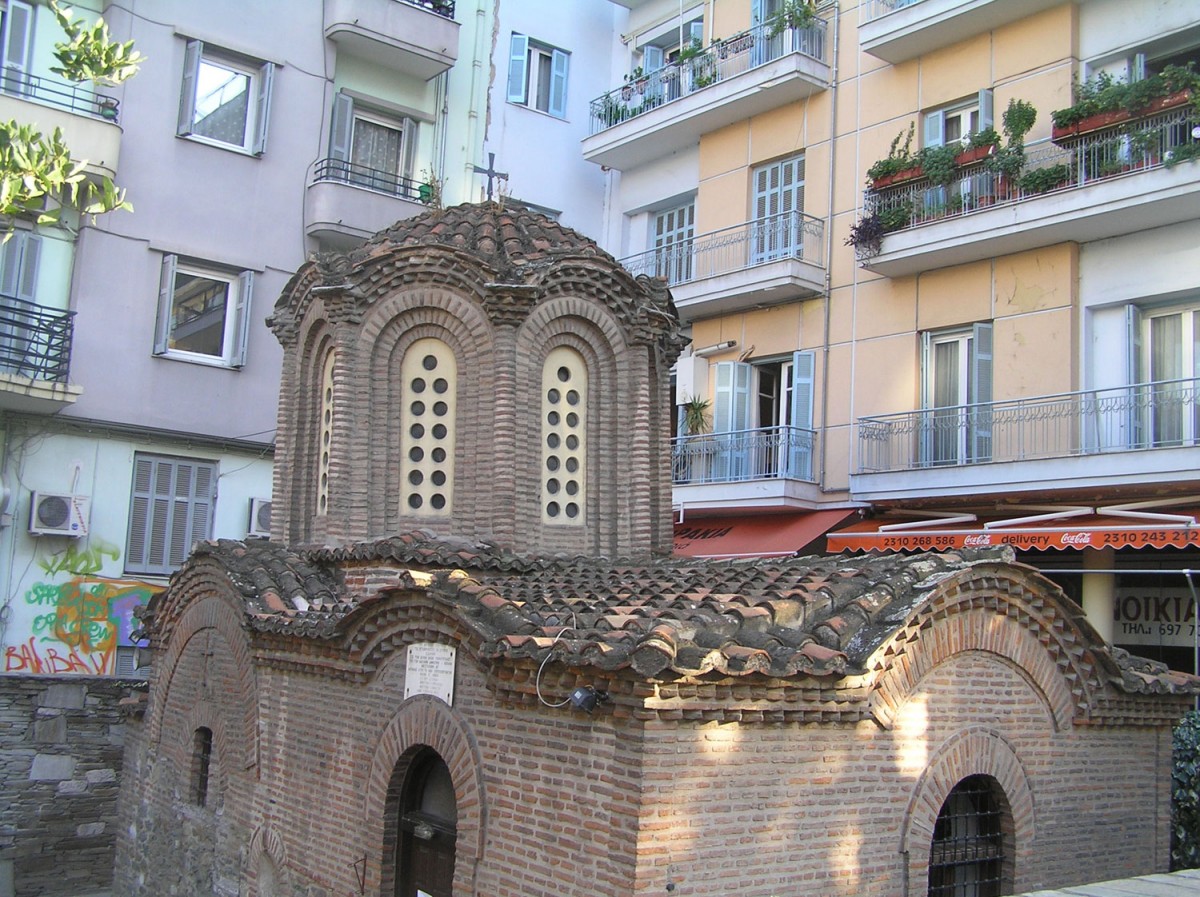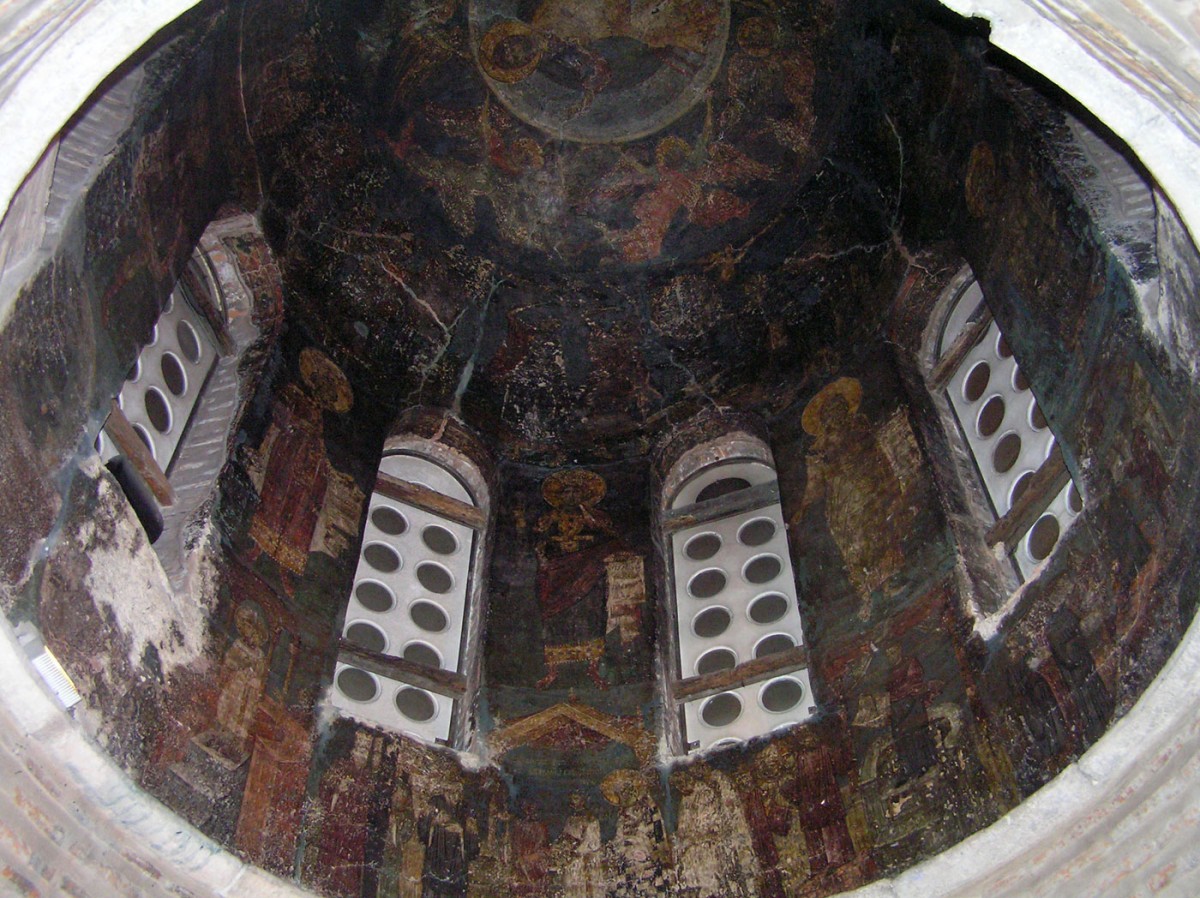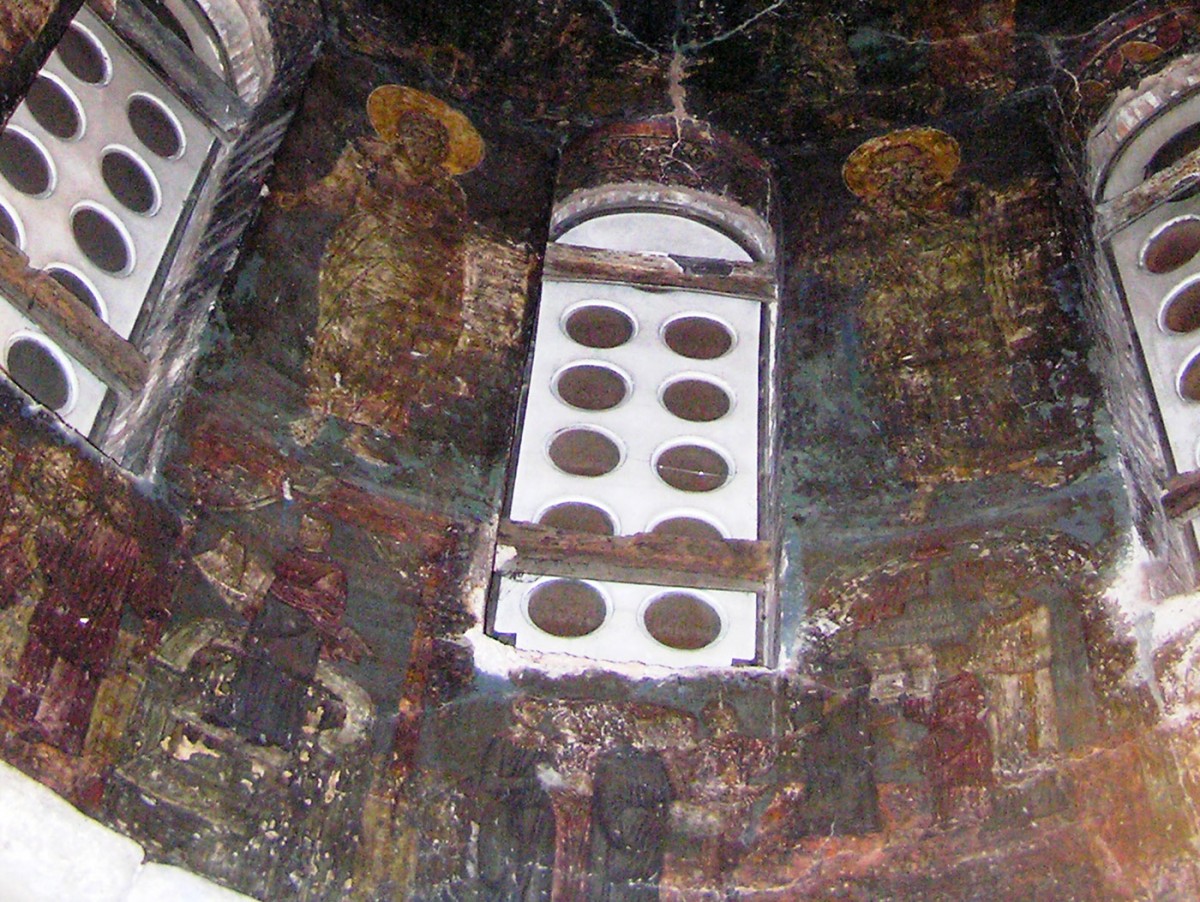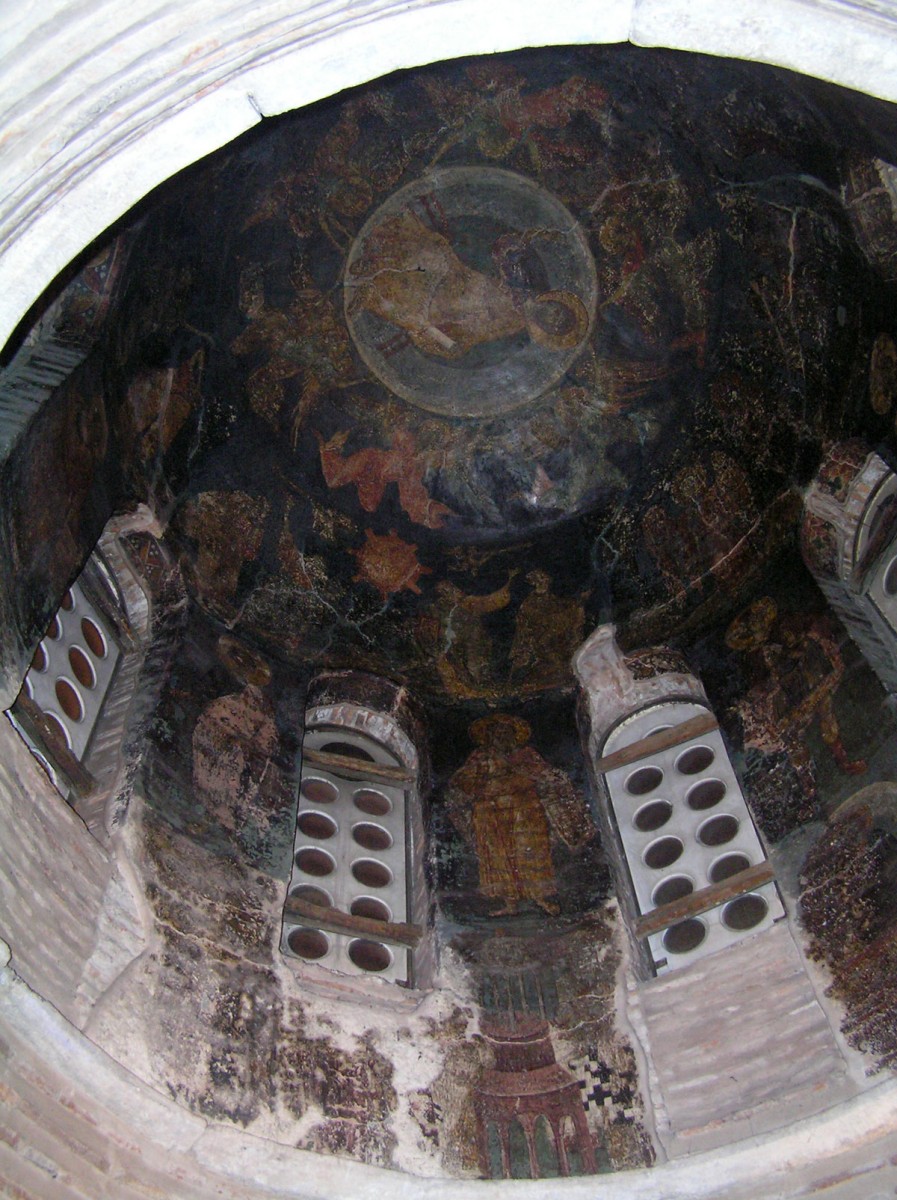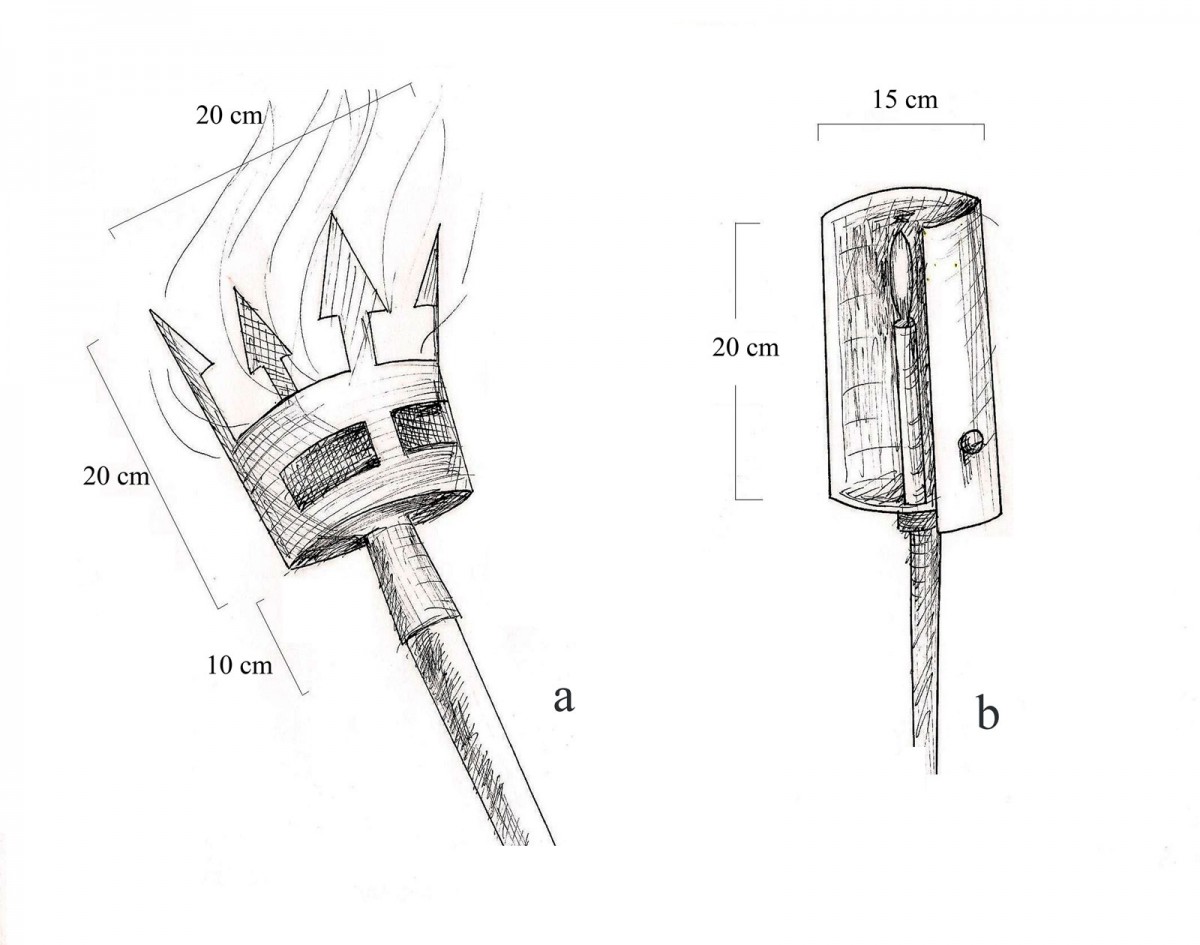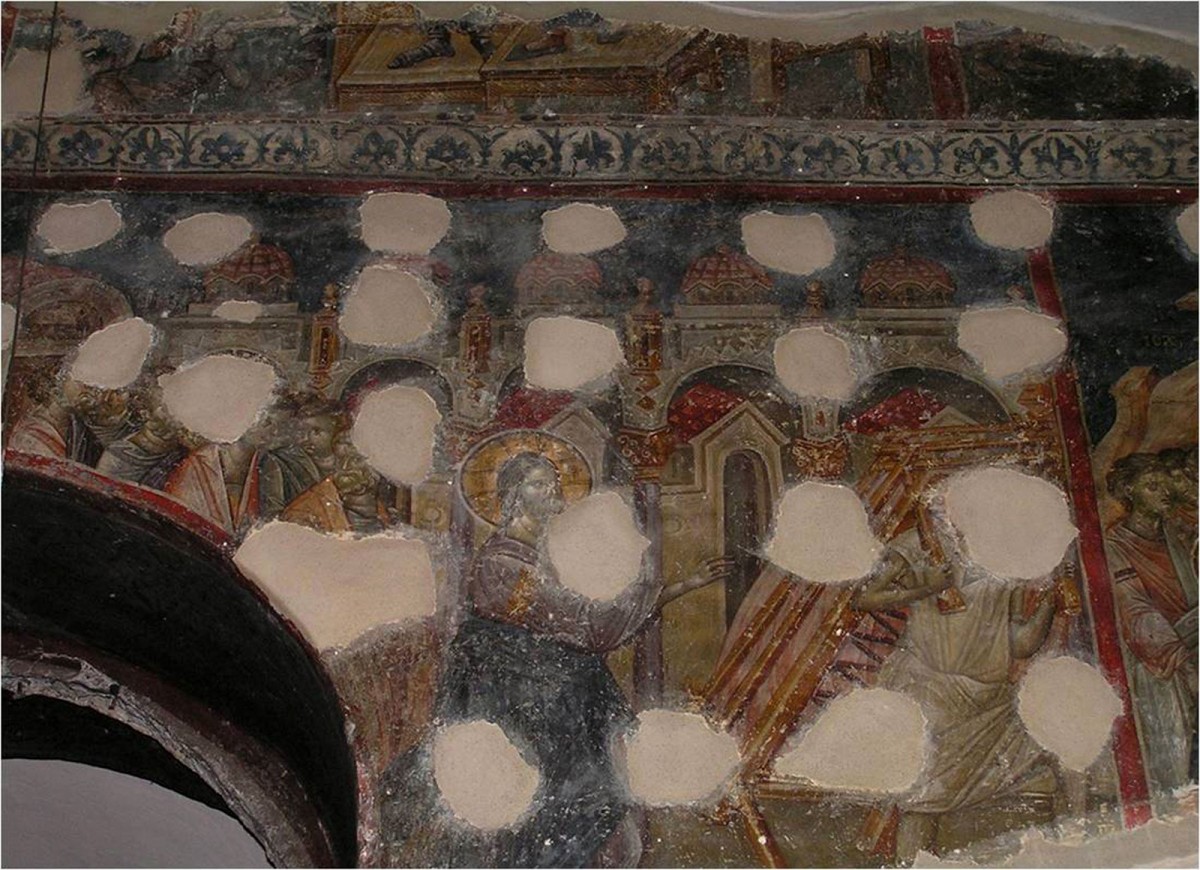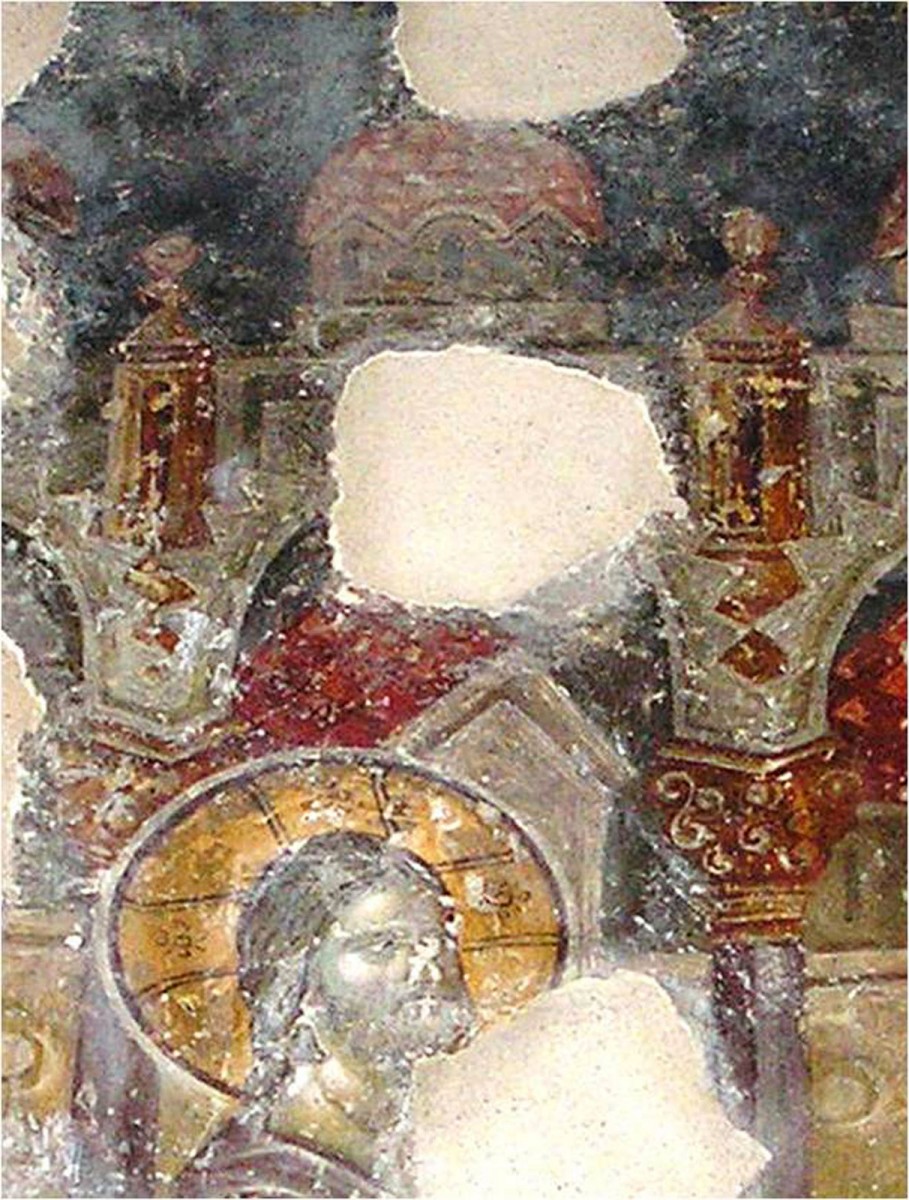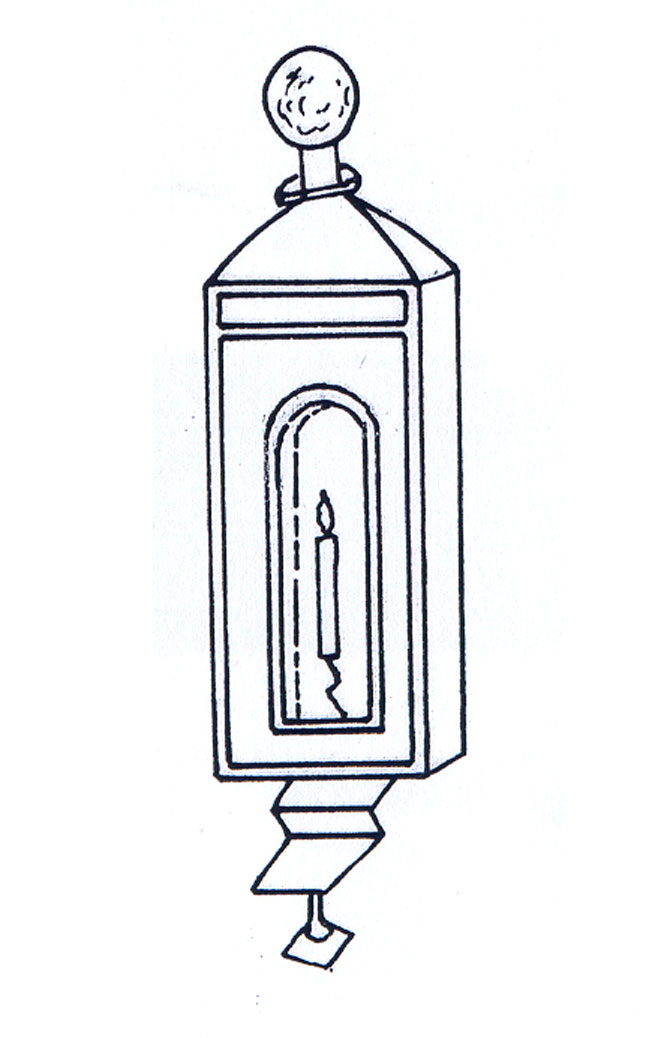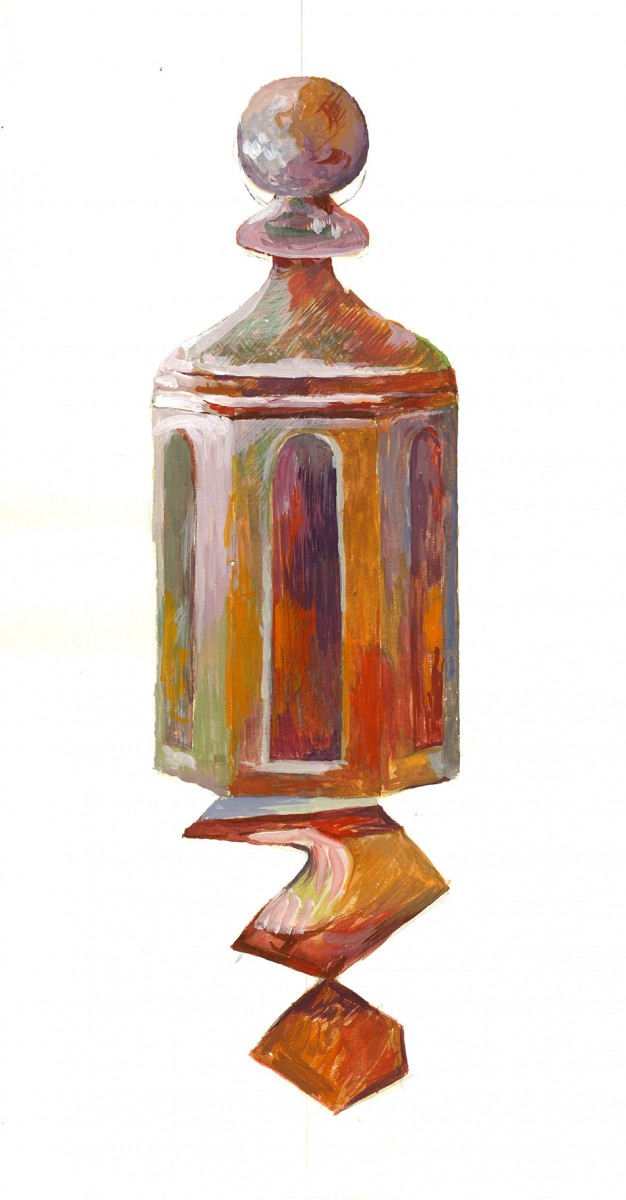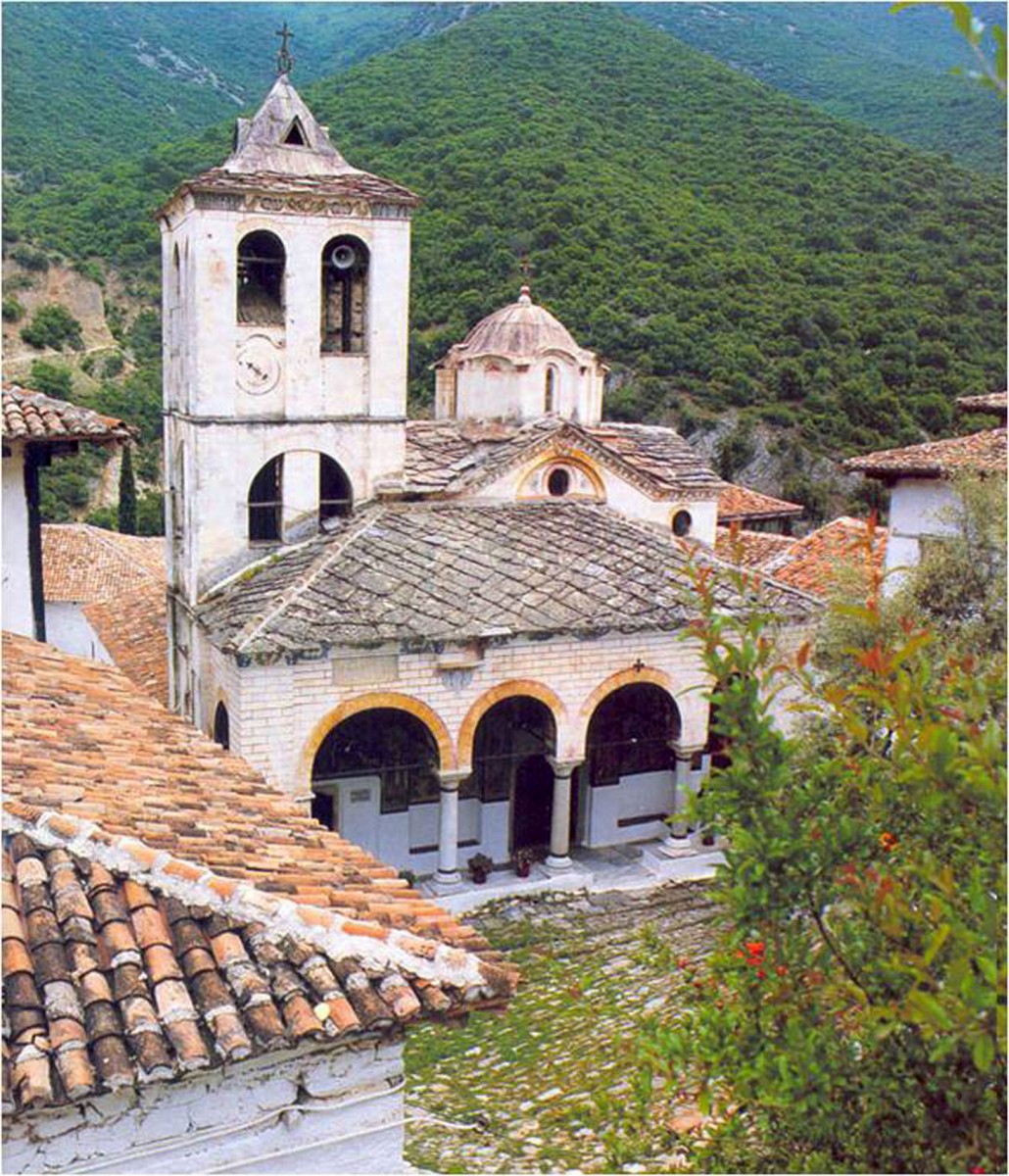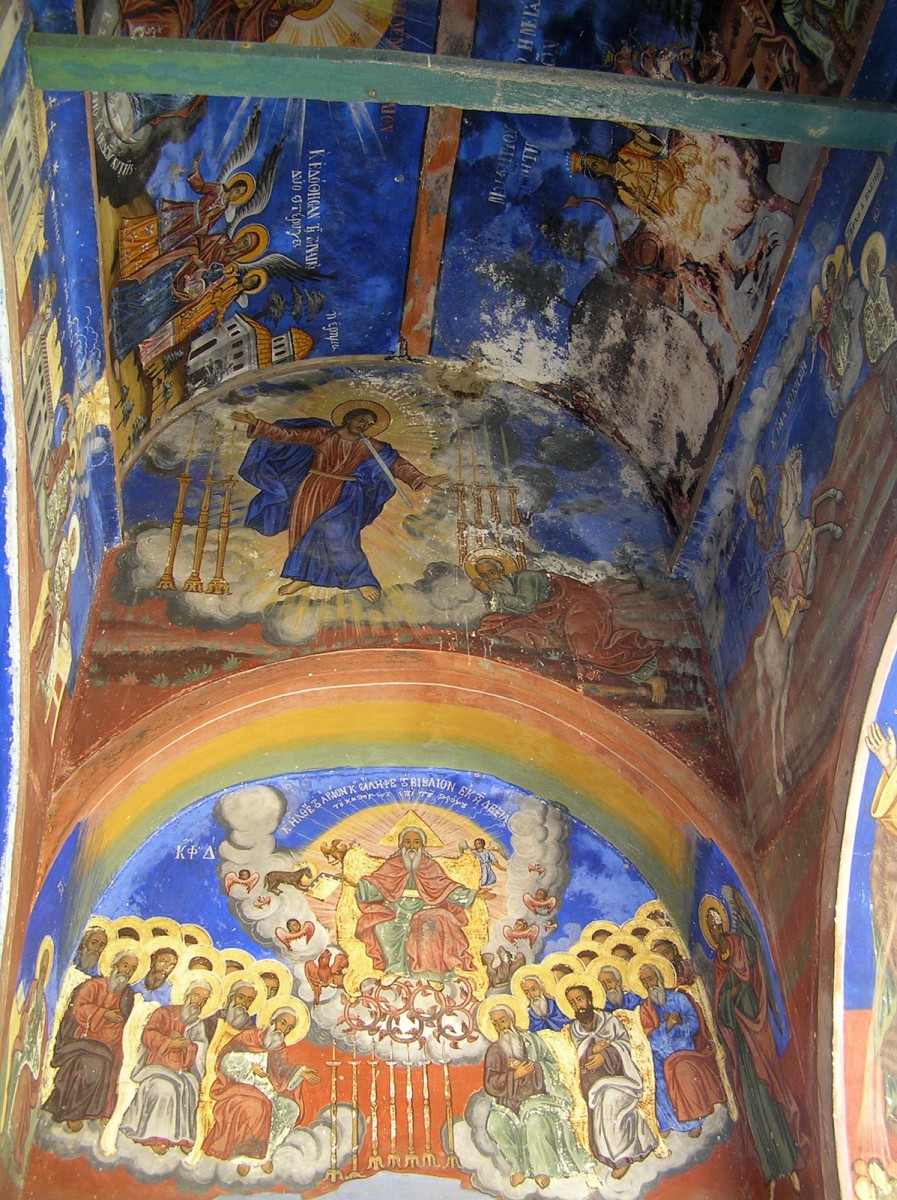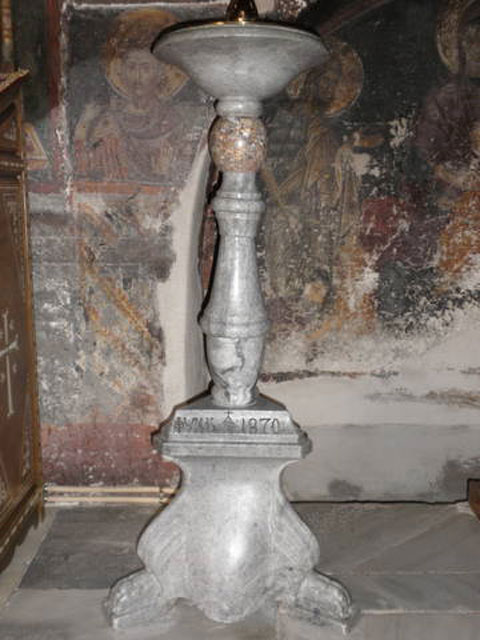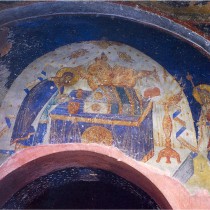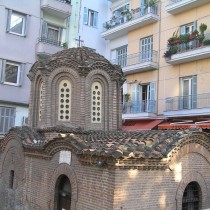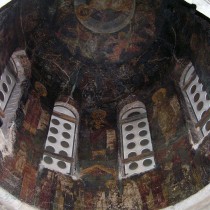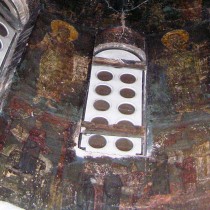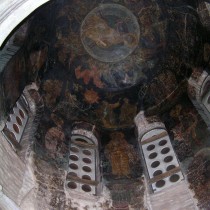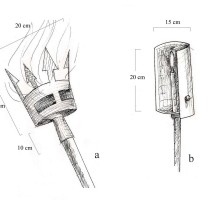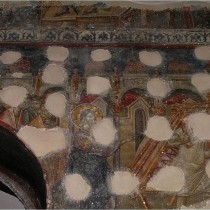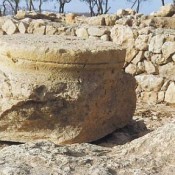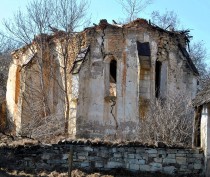In the wall paintings of Byzantine churches lighting devices are depicted such as candles, tapers, candelabra, candle stands, torches, oil lamps etc. In this paper we will try to gather information regarding the type of lighting sources and the rendering of light. We will also examine them from an artistic point of view and try to answer whether their virtual form have any similarities with those found in churches nowadays? The paper focuses on murals of Byzantine churches in Thessaloniki of the 13th-14th c., a period known as Palaeologan Renaissance. Furthermore we will attempt to make a comparative analysis of lighting devices depicted in paintings of the same or a later period. We will also examine the lighting devices depicted on the wall paintings of the Holy Monastery of Timios Prodromos near Serres.
Thessaloniki
The Church of the Holy Apostles
The church dates to the beginning of the 14th c., a period considered to be the “golden era” of Thessaloniki (Xyngopoulos 1953, Stephan 1986, Nikonanos 1998). The monastery was founded by Patriarch Nephon I of Constantinople and was dedicated to the Theotokos.
Above the south entrance of the ambulatory to the naos, the Tabernacle is portrayed (Stephan 1986, p. 132-135) (fig. 1). The artist painted the Tabernacle as described in chapter 26 of the Book of Exodus. In the text there is a reference to the “seven oil lamps”. In this wall painting a candle stand is depicted with seven tapers, instead of seven oil lamps and though the base for the candles is circular, they are depicted in a line. The central candle is larger, it looks like a taper and it is depicted in yellow colour. The rest of them are white and thinner.
Regarding the rendering of light:
a) It seems that the light source is located outside, opposite and above the Tabernacle;
b) The scene is very bright and white light fills the entire space;
c) Τhere is a sense of brightness around the candle stand.
The artist makes innovatiοns, i.e. he uses candles instead of oil lamps. This leads us to the conclusion that at the time of the iconographic programme of the temple and probably even earlier, they used candles or tapers instead of oil lamps. This type of candle stand has been used until now.
The Church of Christ the Saviour
The small Byzantine church of Christ the Saviour dates of the 14th c. (Tafrali 1913, Tattis 1918, Xyngopoulos 1952, Kourkoutidou-Nikolaidou 2008, Iliades 2013) and stands on Egnatia street in Thessaloniki, very close to the Arch of Galerius and Rotunda. The church is an aisled, tetraconch, cross-in-square structure with a tall dome and eight arched windows (fig. 2).
From all the scenes we will focus on those which contain lighting devices, such as the scene of the Little Entrance and Reading the Gospel (Kourkoutidou-Nikolaidou 2008, p. 90-98, figs. 91, 94).
Τhe scene of the Little Entrance
In front of the Royal Door stands the deacon holding a Gospel, a youth holding a candlestick, and a hierarch (fig. 3). According to the inscription, the hierarch is identified to Saint Gregory the Theologian. The candlestick has a golden-yellow colour, the colour of bronze, and the flame of the candle is reddish. The shape of the candlestick is found today in the churches. The painter depicted the faces and objects in the scene with different intensity of illumination. He rendered the face of the Saint more severely, the Gospel with a golden colour and their old vestments with a golden-yellow light. The propylon of the sanctuary scene is illuminated with a golden-yellow light. The same colour is found in the halo of the hierarch.
According to our study of the natural light, the illumination source is opposite and outside the scene. Probably, the painter depicted the morning sunlight that enters through the window of the dome which is opposite to the scene.
Reading the Gospel
On the ambo stands a deacon reading the Gospel and holding a candlestick with a light blue flame (fig. 4). In front of him two youths, one wearing a dark-blue garment holds a candlestick, the flame of which is light red (orange) and the other one holds an open Gospel book in one hand and a candlestick in the other, with the same colour of the flame. The base of the candlestick has three small supporting points and probably it is an Altar candlestick. Their faces are illuminated by candlelight. The Gospel and the vestments of the deacon are illuminated by whitish light.
The display of candlesticks in the Divine Liturgy and the efficiency of light contain realistic elements. The painter depicted lighting devices which were apparently in use at that era.
Τhe painter used the light blue colour for the flame candles, probably because he wanted to render the Holy Light and the spirituality of the scene. The PhD dissertation of L. James (James 1996, p. 4-17) opened new horizons regarding the manipulation of light in Byzantine art. N. Panselinou (note 1) on her recent book The Byzantine Art contributes significantly to the understanding of this subject (Panselinou 2010, p. 267-279).
The final scene of the Divine Liturgy and beneath the prophet Elijah are depicted on a high vaulted architectural structure (fig. 5) (Kourkoutidou-Nikolaidou 2008, p. 97-99, fig. 96).
The light in the vaulted architectural structure can be observed on three orientations as to the incoming viewer/visitor:
– upper left
– frontal
-upper right
The Church of Hagios Nikolaos Orphanos
The small church of Hagios Nikolaos Orphanos was the Katholikon of a monastery, which was founded in an uninhabited area very close to the eastern walls (Xyngopoulos 1964, Mavropoulou-Tsioumi 1970, Kirchhainer 2001). The church has been dated to the second decade of the 14th c. and is an one-aisled basilica with U-shaped ambulatory along the three sides and a triconch sanctuary at the east. It is actually a metochion (dependence) of the Vlatades Monastery and it functioned as a church even during the Turkish occupation.
In the interior there are remarkable murals reflecting the spirit of the renaissance in arts and letters in Byzantium in the Palaeologan era in Thessaloniki and has been associated with the workshop of the renowned Thessalonian artist Kalliergis (Marki 2003, p. 70-73).
The scene of the Betrayal by Judas
From the scene of the Betrayal by Judas we get information about lighting devices which are depicted in it (Iliades 2003, p. 138-139) (note 2). There, a lantern is shown with a candle inside it. At the back, left to the viewer, there are two torches with an intense red light and on the right, there is a guard holding two torches together while another one holds a torch with a red and golden-yellow flame.
The scene of the Betrayal is depicted on several wall paintings in Byzantine churches. For example:
a) On the mural of Arena (Scrovegni) Chapel in Padova, Giotto depicts (1305-1306) two blaze torches with a red-yellow flame (Barasch 1987, p.114, fig. 59; Hall, 1992, p. 36, fig. 9). The base of one of them, on the viewer’s right, is made of metal (note 3) and on its perimeter there are openings to let the air enter and keep the flame on. In the upper perimeter of it at least four metal spears are formed (fig. 6a) (note 4). One third of the cylinder’s side is and may have been covered by glass. The lamp is made of cast metal and has a base to support the wooden staff. Its height is estimated at 20cm and the diameter at 15cm. The light has a fairly large candle with a diameter of 4cm and a height of 13cm. The colour of the candle is brown-yellow with a yellow flame. The total height of the lighting device with the wooden staff is estimated at 2.5m (fig. 6b).
b) In the Monastery of Saint Nikolaos Anapafsas in Meteora (Sofianos and Tsigaridas 2003, p. 205), two torches are depicted alongside a third torch-lantern with a conical roof, which has two small doors in front of it. The format looks like the torch-light of the scene from Hagios Nikolaos Orphanos. The flame of the torches, intense red, has different colour from the third torch (golden-yellow).
c) In the Monastery of Philanthropinon on the island of Ioannina (Acheimastou-Potamianou, 1994, p. 284, fig. 174) and in the scene of Betrayal (1531/32) of the wall painting in the Katholikon two torches are depicted with intense red-colored flames and a third with also red flame in a form of a lantern.
d) The Monastery of Stavronikita (Chatzidakis 1986). The Katholikon is decorated with frescoes by the famous painter Theophanes the Cretan and his son Symeon. In the scene of the Betrayal of a fresco (16th c.) three torches are depicted with an intense red flame and a lantern with two small doors on its front side. In the background of the scene (Jesus Christ’s Trial before Annas and Caiaphas), a lantern that is hung from an arm of a small iron mast is depicted. The mast is supported on the surrounding building wall (enclosure). The light does not seem to come from the lateral openings. If we closely examine the background around the lantern we may observe that it looks brighter. This is caused either by the light of the lantern or the technique of sfoumato the artist used.
The Church of Hagia Aikaterine
The northwest part of Thessaloniki near the Byzantine wall is adorned by the elegant church of Hagia Aikaterine (Diehl et al. 1918, p. 181-183,189-193; Milet 1916, p. 182-183; Hadzitryphonos 1991,p. 424-425 and 2004, 270-274). We do not know its original name, nor when it was founded. Features of the architecture suggest the late 13th or early 14th c. The church is a complex tetrastyle cross-in-square with five domes and an ambulatory terminating in two chapels at the east end, a type very common in Palaeologan Thessaloniki.
The fragmentarily preserved frescoes were discovered during restoration work in 1947-1951. Co-officiating hierarchs and the Communion of the Apostles survive in the sanctuary, scenes from the life of Christ in the naos, angels and prophets in the dome. The choice of subjects suggests that the church belonged to a monastery and was dedicated to Christ.
On the west wall of the nave there is a mural painting depicting the Healing of the Paralytic, a scene that provides us with a source of information about light, the portrayal of light and lighting conditions. The miracle takes place at Bethesda (Kazamia-Tsernou 1992, p. 199) in front of a colonnaded building with a five-domed roof. On the front of the colonnade and above the capitals, the artist has painted five lanterns (figs. 7, 8). These are obviously fixtures designed for exterior lighting and more precisely for illuminating street lights (note 5).
This detail enables us on the one hand to assess the conditions in which the miracle is taking place, and on the other, to ascertain certain features of these lights, such as their form, shape, size, kind of light source, etc.
We discuss two proposals concerning the iconographical form of the lanterns (Iliades 2011, p. 139-141) because the mural is not maintained in good condition.
First proposal
The main body of lantern is cuboid, with an opening in the middle of the front side and another one on the side of the wall of colonnade (fig. 9).
Second proposal
According to the notes of the painter and mosaic artist D. Kamaraki, the shape of the third lantern seems to be hexagonal (fig. 10) (note 6). Looking closely at the first lantern, on the viewer’s left, it is possible to distinguish the candle, which is supported on a base of sheet metal in a zig-zag shape. The base of the lantern may be made of sheet copper. The candle appears to be burning, but it is not shedding light. The upper part of the lantern is shielded with a tapering lid that rises in the centre to a ring supporting a globe. At the base of the ring there may be holes to vent the smoke and heat. The second lamp is depicted in the same way, while the third is not lit. The lamp base is fixed on the wall by an angled bracket, which keeps the lantern away from and above the point of attachment.
It’s quite interesting how the painter portrayed the base of each lantern on the wall. Εach of the bases has a different angle. Ιn thisway the artist wanted to express the change of position of viewer. This is, then, a simple, realistic, narrative rendering of a historic event.
The painter is concerned with a historic detail, but not at a specified time. Regarding the lighting conditions, it is not possible to extract any further information from the scene. What conditions were depicted in the scene of the miracle? Is it in the light we perceive or the light apprehended by the artist in expressing a transcendent world?
Serres
The Monastery of Timios Prodromos near Serres
The Monastery of Timios Prodromos was founded by the monk Ioannikio, in about 1270 in the depth of a ravine of the Mountain Menoikion and in a distance of 12kms NE of the city of Serres (fig. 11) (Xyngopoulos 1973, p. 1-8; Strati 1989). The foundation of the church dates to the beginning of the 14th c. In the present form it consists of the exonarthex, the Enate, the Mesonyktiko, the main church and the Holy Altar. Along the west side of the Katholikon extend the exonarthex, a structure dating back to 1849 (Strati 2007, p. 145-159).The wall paintings were made in 1852 by the painter Stergios Nevrokopites. On the west of the exonarthex candle stands are depicted in two scenes (fig. 12):
Chapter 1 of the Apocalypse
Chapter 4 of the Apocalypse
The painter depicted the flame of candle stands using light blue colour. The forms of lighting devices are similar to those found in the Katholikon, where on their base the date 1870 is engraved (fig. 13).
Conclusions
In conclusion, I would like focuson two issues:
The painters used standard lighting devices in their wall paintings that were either depicted on earlier murals or found in churches during the period of the iconography. Even today we see in churches lighting devices similar to those of the murals.
It is quite interesting how the painters used the colour flames of the lighting devices. Of course, this has to do with the artistic movement that each artist belonged to. By depicting the flame of the candles with intense red, the artist wanted to give more tension on the issue. However, in some cases, the colour of the flame is the same with that which is actually emitted by lighting devices. But when the artist depicts the flame with blue or cyan color, he wants to declare the truth, the harmony, the tranquility, the celestial consciousness and spirituality. Perhaps it symbolizes the “Uncreated Light”, the light that was revealed on Mount Tabor at the Transfiguration of Jesus.
Ioannis Iliades
Dr Electrical Engineer and
Lighting Engineer
* I am mostly grateful to the 9th Ephorate of Byzantine Antiquities for granting me permission to carry out the research in the interior of the churches in Thesssaloniki. I would also like to thank the Archimandrite Nectarios Triantafyllidis and the Priest Efthimios Mertzanis for their help of my research in the church of Hagia Aikaterine.
This paper was presented in the 4th International Lychnological Association (ILA) Round Table, Lighting in Byzantium, 10-15 October 2011 at the Museum of Byzantine Culture in Thessaloniki.
